
ICCROM_ICS03_ReligiousHeritage_en
.pdf
4
Following discussion of the key termsimplicit in the phrase ‘living religious heritage’, two cases studies from Japan are presented. The first, the Ise Shrine, is an example of a periodic rebuilding ritual;
the second, the Gion Matsuri Festival in Kyoto, is an annual religious festival. As background to the case studies, the Japanese system of heritage protection is explained, as well as tangible/intangible issues and the question of authenticity.
[Nobuko Inaba]
The Ise Shrine and the
Gion Festival
case studies on the values and authenticity of Japanese intangible living religious heritage
Terminological issues
What does ‘religious’ mean in the context of ‘Living Religious Heritage’?
If we approach ‘Living Religious Heritage’ only from the aspect of the physical expression of heritage and its conservation, the confrontation or contradiction of needs between material-oriented conservation and the religious activities utilizing the heritage would be unnecessarily overemphasized. The awareness of the communities to which the concerned heritage belongs (in this case the religious communities), as well as the conservation or regeneration of structures of heritage value satisfying conservation ethics, are already under discussion around the world.
What kind of heritage are we going to talk about under the theme of ‘Living Religious Heritage’? Are we speaking of the buildings or the objects that are used for religious purposes, which therefore qualify them to be identified as ‘living’? Or are they the ongoing, literally living religions or religious activities themselves? Or something else?
Religion: from this most important keyword, we are immediately reminded of the destruction of the Bamiyan Buddha statues, or many other similar
tragedies resulting from religious conflicts. Today, any discussion on and around religion may bring us to a discussion on world peace. How can we develop our discussion positively without revealing only the difficulties between religion and heritage?
Responding to this question, the first thing that came to mind was the strength of peoples’ faith, which is still playing an important role in communities in many Asian countries. In some temple compounds in small villages in remote areas of Asia, not only the statues enshrined there, but also ornaments and utensils are of heritage value, and are still in use for the village residents’ rituals and festivals, which are also themselves heritage. Instead of removing these objects from the original place to a modern museum, it is more important to pursue a holistic approach that recognizes these properties as a total expression of their host culture, combining tangible (both immovable and movable) and intangible expressions of heritage together with the natural/cultural landscape.
What is clear from the beginning, and therefore what we should bear in mind when developing our discussion, is the fact that, whatever the heritage types, the relationship between religion and heritage
– whether the conditions are negative or positive
– depends very much on the characteristics of the
44 Conservation of Living Religious Heritage
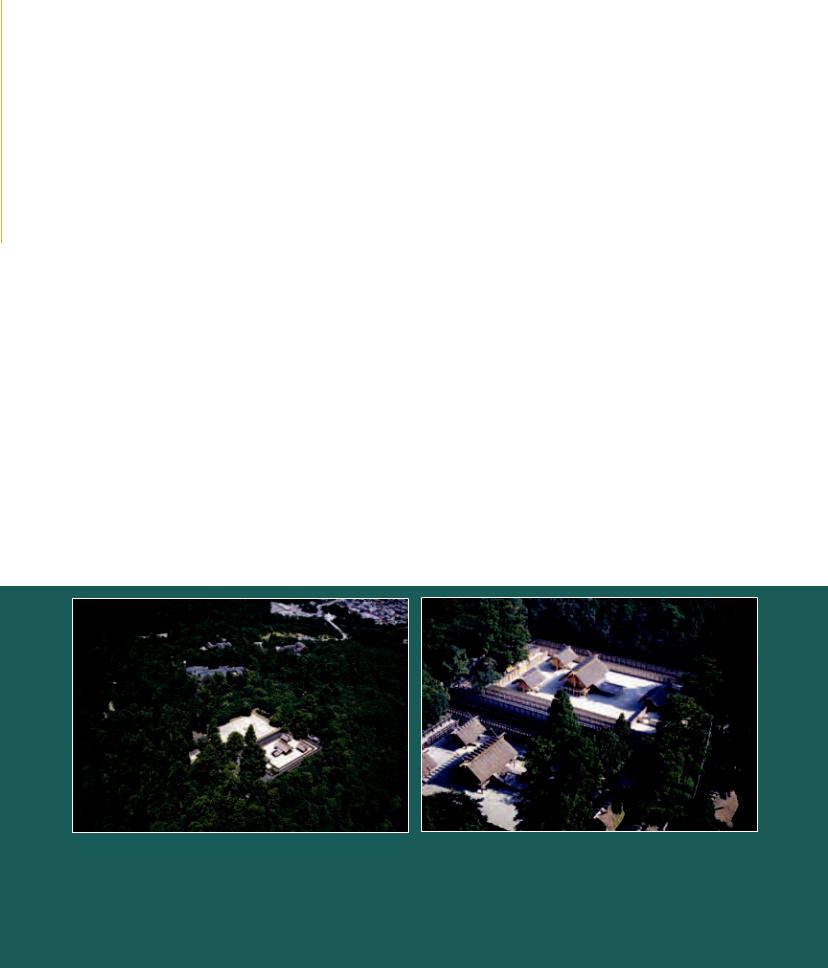
religions themselves and their relation to the society. to explain this more clearly, it can be said that the conditions for our discussion are quite different when we talk about the major worldwide established religions with influential power – such as religions which have been given the status of state religions in many countries – as opposed to when we are talking about the minor or indigenous religions which are integral parts of the culture in smaller communities that are threatened and are to be protected. It should be clear what the status of the religion is in terms of the discussion in relation to the society, if we would like to proceed with the discussion on religious
heritage.
whaT does ‘living’ mean in The conTexT of ‘living religious heriTage’?
Let’s move on to another point of discussion on the theme of this volume: living. the wording ‘living heritage’ or just ‘living’ has come to be used widely recently, reflecting the increasing awareness of the importance of this concept. Some use the word ‘living’ as an antonym of ‘dead’, meaning to indicate a type of heritage still in use. Others use this concept for heritage sites where people actually live in or around the site. the usage or the definition of the concept differs, depending on the objectives of the discussion. However, whatever the sphere of our discussion, it is certain that we are currently in the
middle of a larger effort to explore a new, more holistic approach to heritage conservation, giving attention to human-related/non-material aspects of heritage value and trying to link with the surrounding societies and environments, going beyond the classical material-oriented conservation practice of monumental heritage.
Pursuing the discussion around the keyword ‘living’ in this larger movement of the heritage conservation society, we find that this has also been much discussed through another keyword, the term ‘intangible’. the deliberations involving the keywords of ‘living’ and ‘intangible’ are very much interrelated in recent vital discussions among heritage experts exploring the future of the heritage profession.
UNeSCO has recently adopted a new international Convention for the Safeguarding of the Intangible Cultural Heritage at its 32nd general Conference held in Paris in October 2003.1 Professionals in the tangible heritage field have also been working to develop the concept of cultural heritage, paying attention to the value of the intangible manifestation of heritage. Preceding the new UNeSCO convention on intangible heritage, already in the early 1990s, the World Heritage Committee of the UNeSCO Convention concerning the Protection of the World Cultural and Natural Heritage (the 1972 World Heritage Convention) introduced the new category of ‘cultural landscape’, as well as new wording to be used in the identification of cultural
FIguRe 1 Ise shrine. aerial view of the inner main sanctuary after completion of the sixty-first renewal ceremony, showing the two sites side by side, with the new shrine buildings on the right.the former building site on the left is now empty, and is waiting for the next renewal ceremony.the sixtyfirst ceremony started in 1985 and the two main sanctuaries’ renewal was completed in 1993.
Jingu administration Office © Jingu shicho
FIguRe 2 Ise shrine. aerial view of the inner main sanctuary during the sixty-first renewal ceremony, showing both the old and the new complexes. the old buildings were removed after the deity-transfer ceremony was conducted.
Jingu administration Office © Jingu shicho
4 • the ise shrine and the Gion Festival |
45 |
|
|
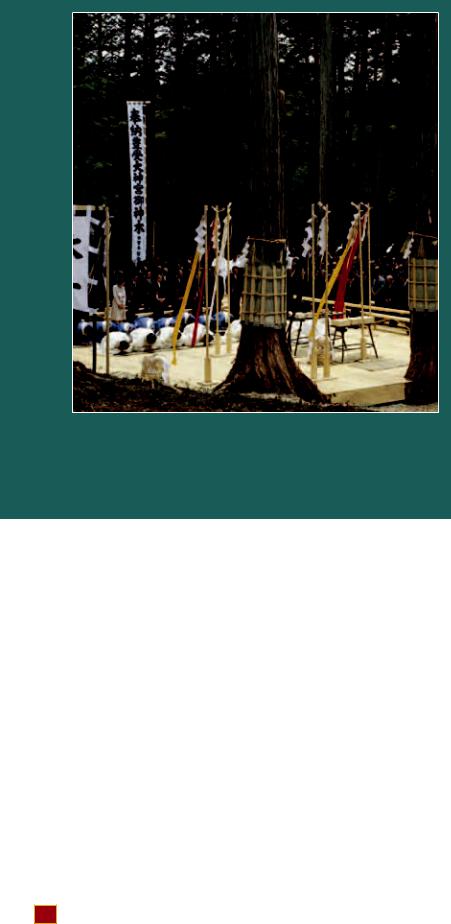
FIguRe 3 Ise shrine. Misoma-hajime-sai Ceremony, the ceremony to report to the deity the official start of the cutting of trees to be used for the new sanctuary’s buildings. a photo of the ceremony in June 1985 for the sixty-first renewal ceremony.
Jingu administration Office © Jingu shicho
heritage, such as ‘living tradition’, within the criteria for the inclusion of cultural heritage properties on the World Heritage List.2 the International Council on Monuments and Sites (ICOMOS) is working in the same direction and it adopted ‘Place – memory – meaning: preserving intangible value in monuments and sites’ as the theme of the 14th general Assembly held in zimbabwe in October 2003. It is clear that we can also observe a similar movement in the field of movable heritage, as evident in the programmes of the International Council of Museums (ICOM). the theme of the general Conference of ICOM in October 2004 was ‘Museums and Intangible Heritage’.
All of these initiatives in the fields of both intangible and tangible heritage are based on the current global movement, which is trying to promote awareness of the importance of respecting cultural diversity, especially those of minorities and folk cultures.
We are attempting to deal with heritage that is by nature living and changing. the issue before us
is not so much about whether the form of heritage is tangible or intangible. No intangible heritage can exist only as itself. Always it is associated with people, objects, structure or place. It is the living tradition at large which encompasses both tangible and intangible expressions, and which is confronted with the contemporary globalization of society.
In this regard, the definition of intangible heritage in the new UNeSCO Convention for the Safeguarding of the Intangible Cultural Heritage is very thought-provoking. In Article 2 it defines intangible cultural heritage as:
‘the practices, representations, expressions, knowledge, skills – as well as the instruments, objects, artefacts and cultural spaces associated therewith – that communities, groups and, in some cases, individuals recognize as part of their cultural heritage’.
this definition is the definition of living heritage itself, encompassing both tangible and intangible expressions of our traditional culture.
Returning to the theme of ‘Living Religious Heritage’, the same question regarding the word ‘religion’ arises. What does the word ‘religion’ signify in this movement for the promotion of the concepts of living or intangible heritage? Although the word ‘religion’ is carefully avoided in the definition of intangible heritage in the new UNeSCO Convention on intangible heritage, probably in order to avoid potentially divisive debates among religions, it is obvious that religious aspects are necessarily included within intangible heritage. Regarding this point, the UNeSCO convention on intangible heritage states:
‘for the purposes of this Convention, consideration will be given solely to such intangible cultural heritage as is compatible with existing international human rights instruments, as well as with the requirements of mutual respect among communities, groups and individuals, and of sustainable development’.
Living heritage can be thought of as fruit from traditional life before the modernization and the globalization of the world started in the last century. It is closely related in a complicated manner to our traditional social system itself. As religions or belief systems were the core of our life, any form of living heritage is inseparable from the framework of the religion or the belief system of its society.
the issues are therefore integrated into the changing nature of living heritage itself, whether the heritage is religious or not, in the discussion of living heritage. they challenge us and our concepts of heritage which have been developed around mate- rial-oriented preservation practices. they press us to abandon our preconceptions of heritage. What are we preserving? What can be changed? What can’t be
46 conservaTion of living religious heriTage
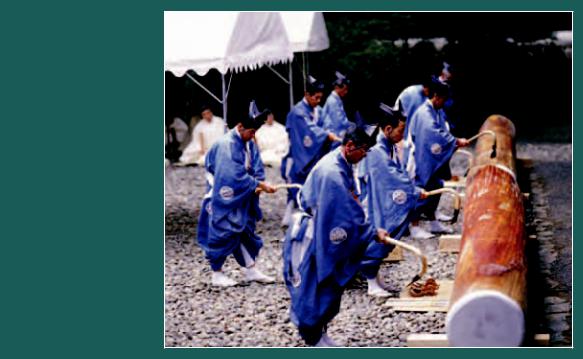
changed? How can we assess authenticity? Regarding the issue of religion and living heritage,
it should be noted that traditional social systems sometimes enforce taboos or discrimination against gender, class or race, these often being derived from religious or belief systems and which challenge the human rights principles of our contemporary society. Admitting the importance of supporting the preservation of living heritage, we also ought to be aware of this important aspect. Again, situations differ very much from place to place or from society to society, according to the religions themselves and their relation to the societies.
religion and heriTage in The heriTage proTecTion sysTem in japan: The background of The Two case sTudies
Bearing in mind the points demonstrated in the previous sections, two case studies of living religious heritage in Japan will now be presented. they are both examples where the religious activities themselves are recognized as heritage. the first is a periodic rebuilding ritual of shrine buildings of an indigenous Japanese religion, and the second is an annual religious festival held by local Japanese people.
these were selected as examples of living religious heritage, especially those of the intangible type of living religious heritage in Japan, considered suitable for examining the following two aspects:
• the way existing religions are handled in the
FIguRe 4 Ise shrine.
Kozukuri-hajime- sai Ceremony, the ceremony to pray for the
carpenters’ safety before starting the carpentry work. a photo of the ceremony in april 1986 for the sixty-first renewal ceremony.
Jingu administration
Office © Jingu shicho
formal heritage protection system in Japan;
•the way the continuously changing character of living religious heritage is handled by the value or authenticity judging system at the core of our
modern heritage conservation ethics that are scientific and international.
the examination of the two case studies from Japan is valid only in the context of a clear understanding of the status of religion in the national legal system, as well as the exact system, in terms of definition and criteria, of the preservation of the living or intangible heritage in the formal heritage protection system. In this section, the legal status of religions and their relation to the formal heritage protection system in Japan will be explained.
religion and heriTage in The japanese law
to explain the status of religions in Japan, nothing can make the point more clearly than introducing Article 20 of the Japanese Constitution, which stipulates the following:
‘freedom of religion is guaranteed to all. No religious organization shall receive any privileges from the State, nor exercise any political authority. No person shall be compelled to take part in any religious act, celebration, rite or practice. the State and its organs shall refrain from religious education or any other religious activity.’
the important point of this article, particularly for the theme of this book, is the separation of religion and the state.
Out of the experience in which an indigenous Japanese religion, the then state religion ‘Shinto’, was an integral part of the political system of the government prior to World War II, the importance of the strict separation of religion and the state became one of the fundamental principles of the Japanese political and administrative systems. In Japan, no religion is designated or protected as the state religion. At the same time, the freedom of religion is secured and all religions are equally treated as stipulated in the Constitution mentioned above.
there are no restrictions or specific conditions in the Japanese heritage law to identify, designate, regulate
4 • the ise shrine and the Gion Festival |
47 |
|
|
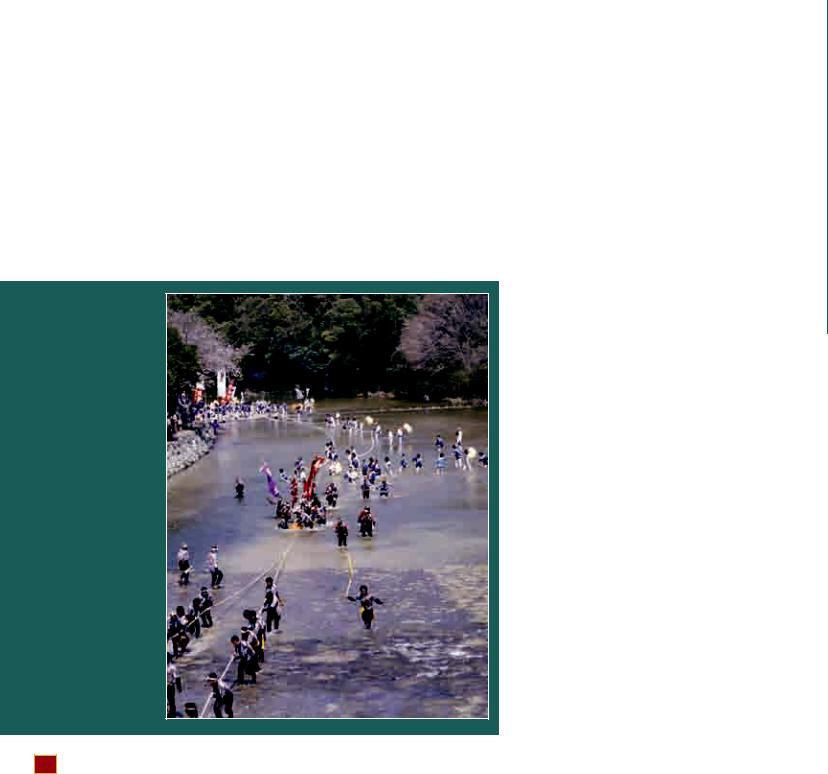
and provide public support to religious heritage or heritage possessed by or in the custody of religious bodies in Japan. The same conservation standards are applied to any kind of heritage. All heritage sites, objects, etc. are treated equally whether or not the heritage concerned is religious or is owned by religious organizations.
Actually, among examples of tangible heritage, 70% of the buildings and structures designated as architectural heritage by the central government are owned by religious organizations. The assessment of the value and authenticity of tangible heritage is determined mainly on the basis of its material expression. As observed elsewhere throughout the world, conflicts between conservation standards and the utilization of heritage by custodians are occurring also in Japan.
Is it more difficult to preserve the heritage used for religious purposes than that used for other purposes? The answer to the question is probably both ‘yes’ and ‘no’, again depending on the religion involved and its relation to the society. On the one hand, temples and shrines which have been continuously used for the original functions since the time of their initial construction are in much better condition than buildings which have lost their
Figure 5
Ise Shrine. Okihikigyoji Ceremony, the ceremony to bring the wood for the rebuilding to the sanctuary sites. A photo of the ceremony in April/ June 1986 for the sixty-first renewal ceremony.
Jingu Administration
Office © Jingu shicho
original function and which were remodelled in order to survive. On the other hand, there are also temples and shrines where the conservation experts are in constant conflict with the religious communities, whose activities tend to change the perceived heritage value of the concerned sites.
However, for heritage of intangible form, the conditions of its relation to religion must be looked at rather differently. For this type of heritage, religion is not just the external function of that heritage, but rather an inseparable part of the heritage substance itself. In this regard, when formal protection by the authorities is considered, the principle of the separation of religion and the state becomes important.
In Japan there is no restriction on designating and supporting religious heritage as long as it meets the criteria established for designation as a type of cultural property. However, if there is any doubt relating to the principle of separation of religion and state stipulated in the Constitution, the designation is sometimes made only for those parts of the heritage which are shared by the public at large, while carefully avoiding designation of those religious rituals executed as part of the on-going ordinary functions of the religious bodies. For example,
many festivals are closely related to the ritual ceremonies of the community temples and shrines, but their designation as heritage is sometimes limited to festival activities executed by the communities, avoiding ritual activities performed by the priests in the shrine or temple complex. This is discussed further below.
Intangible heritage concepts in Japan
It is understood that systems for the conservation of living heritage, especially those for heritage of intangible form, are different from country to country – since such systems are inseparable from the cultural structure of the concerned society. The extent of these systems is far greater than the material-oriented tangible heritage conservation systems. As another condition for the case-study discussion, the formal system for the protection of cultural heritage in Japan will be examined in this section, in particular that relating to intangible heritage.
Japan has more than half-a-century of experience in the protection of heritage of intangible form, having introduced this concept into its formal modern heritage preservation system in 1950. It would be
48 Conservation of Living Religious Heritage
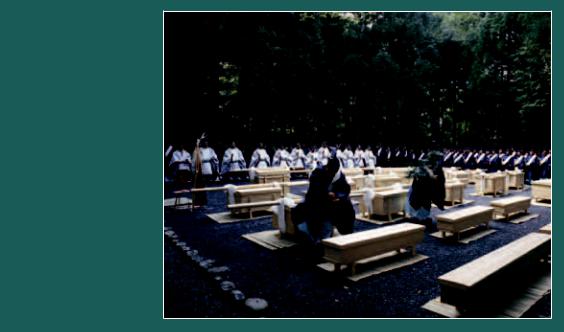
FIguRe 6 Ise shrine. Kawara-oharai
ceremony, the ceremony to purify the offerings to the deity. a photo of the ceremony in October 1986 for the sixty-first renewal ceremony.
Jingu administration Office © Jingu shicho
worthwhile to examine this experience now, at a time when UNeSCO has just adopted a new Convention for the Safeguarding of Intangible Cultural Heritage and when many heritage experts are becoming aware of this relatively new concept in the international heritage preservation arena. It has been recognized that many experts have not yet come to understand this concept fully, as very few countries are actually
and intangible forms has its own system of identification in the Law. the Law defines five categories of cultural properties according to their forms and value assessments (the phrases related to the value assessments are italicized in the text below):
yukei bunkazai (tangible cultural properties)
Amongtangibleculturalproperties both of immovable and movable forms, are buildings and other structures, and fine and applied arts and other historic materials which possess a high historical, artistic and/or scientific value in and for this country.
mukei bunkazai (intangible cultural properties)
Among intangible cultural properties, are the artistry and skills employed in drama, music and applied arts, and other intangible cultural properties which possess a high historical and/or artistic value in and for this country.
handling this type of heritage as part of their routine heritage preservation practice.
definiTions of culTural heriTage in The law
the present Japanese national law, the Law for the Protection of Cultural Properties, was established in 1950, but its origin dates back to the old law of 1897, the Law for the Preservation of Ancient temples and Shrines. It underwent major revisions in 1954, 1975 and 1996, and a major revision was in preparation in 2003. the history of these revisions is explained as the expansion of the concept of heritage, moving from the preservation of monuments, sites and art objects to the inclusion of new categories such as intangible heritage, folk-cultural heritage, traditional techniques, as well as historic districts.
the uniqueness of the Japanese law on cultural heritage can be summarized by saying that it covers a very wide range of heritage types from intangible heritage to tangible heritage – both movable and immovable – as well as natural heritage, including even rare animal or plant species. It also should be noted that ‘folk-cultural heritage’ in both tangible
folk-cultural properties (including tangible and
intangible)
this includes properties related to the folk-culture both of tangible and intangible forms, such as manners and customs related to food, clothing and housing, to occupations, religious faiths, festivals, etc., to folk-entertainments, and clothes, implements, houses and other objects used therefore, which are indispensable for the understanding of changes in people’s modes of life. In addition to manners and customs, skills and techniques nurtured in traditional folk industries such as rice-wine making or traditional regional cooking will be added to this category of intangible folk-cultural properties in the forthcoming revision of the law expected to be approved in 2004.
historic sites, places of scenic beauty and natural monument
this category includes:
•historic sites: shell mounds, ancient tombs, sites of palaces, sites of forts or castles, monumental dwelling houses which possess a high historical and/or scientific value in and for this country;
•places of scenic beauty: gardens, bridges, gorges, sea-shores, mountains, and other places of scenic
4 • the ise shrine and the Gion Festival |
49 |
|
|
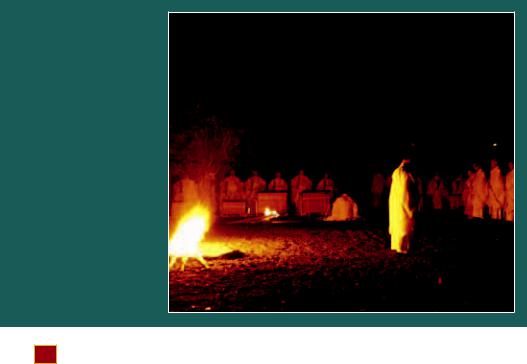
beauty which possess a high value from the point of view of art or visual appreciation in and for this country;
•natural monuments: animals (including their habitats, breeding places and summer and winter resorts), plants (including their habitats), and geological features and minerals (including the grounds where peculiar natural phenomena are seen) which possess a high scientific value in and for this country.
production of materials and the repair of cultural properties;
•unexcavated archaeological cultural properties: a zoning system for areas that are known to have archaeological value but are left unexcavated, mainly to protect them from development.
the systems for identification and evaluation
(criteria/authenticity assessment) and conservation standards as well as the systems of public support differ from category to category.
groups of historic buildings
this category includes groups of historic buildings, or conservation areas including such, that are of high value which form a certain antique beauty in combination with their environs, such as towns with fortified buildings, farming and fishing villages, etc.
cultural landscapes
Cultural landscape areas are to be introduced as a new category of cultural properties as part of the forthcoming revision of the Law expected to be approved in 2004. this category will include landscape areas associated with the life or livelihood of the local people that are indispensible for the understanding of changes in people’s modes of life and livelihoods, such as agricultural fields, forested areas, canals and reservoirs.
Besides these five categories defined as cultural properties, the Law also provides the following two heritage categories to support the protection of cultural heritage:
•traditional conservation techniques: traditional techniques which are necessary for the
FIguRe 7 Ise shrine.
sengyo Ceremony, the ceremony
to transfer the symbols to the new buildings which took place in 1987 for the sixty-first renewal ceremony at the sanctuary Izanagi- no-Miya, one of the 14 associated sanctuaries.
Jingu administration
Office © Jingu shicho
how The proTecTion sysTem for heriTage of inTangible form works in japan
Among the categories of cultural heritage in the Japanese system explained in the previous section, we can identify two categories as heritage types of pure intangible form: Mukei Bunkazai (intangible cultural properties) and intangible folk-cultural properties. Besides these two categories, the category of ‘traditional conservation techniques’, although it is defined in the Law only for those techniques necessary for conservation, has actually been working to protect traditional craftsmen’s skills in general. these three categories complement each other, covering all types of intangible expressions of Japanese heritage.
Properties of intangible form (Mukei Bunkazai) are also included in the category of intangible folkcultural properties. to try to explain the differences between these two categories, we can say in short that Mukei Bunkazai covers those properties which are highly artistic and/or historic, while intangible folk-cultural properties are defined as properties which are ‘indispensable for the understanding of
changes in the people’s modes of life’. It would be worthwhile to note
that the definition of intangible heritage in the new UNeSCO Convention on Intangible Cultural Heritage would fit best the intangible folk-cultural properties category. It is also worth observing that the Japanese system for the protection of intangible heritage has been a significant influence in the development of the UNeSCO strategy for intangible heritage, although the details of the Japanese system are not widely understood. the reasons for keeping Mukei Bunkazai separate from folk-cultural properties, as well as the reasons for the existence of differences between two systems, are closely related to the special circumstances of Japan.
the protection of intangible heritage
50 conservaTion of living religious heriTage
can only be performed by those individuals or groups of people who are able to transmit such intangible heritage to the next generation. the system for the protection of intangible heritage in Japan is designed as a combination of two inseparable components: the designation of the properties themselves, and the recognition of persons or groups of persons who possess the skills and techniques to represent the high standard of such properties (the wording for these persons or groups or persons in the translation of the Law is ‘holder’ or ‘holding body’). for the categories of Mukei Bunkazai and traditional conservation techniques, the recognition of such persons or groups of persons is regulated by the Law to be included as part of the process at the time of the designation. there is no such rule established for intangible folk-cultural properties in the Law. However, as a matter of common practice, groups of people are also identified whenever the properties are designated. (for this category of intangible folk-cul- tural properties, only groups of people are identified, not specific individuals.) the support systems for the protection of these intangible cultural properties are realized mainly through these recognized individuals and groups.
abouT so-called ‘living human Treasures’
the individuals recognized in the category of Mukei Bunkazai (artistry and skills of high historical and artistic value) are known as ‘ningen kokuho’ or ‘living human treasures’. Although in the Law there is no such wording as ‘living human treasures’ to name such individuals, this charming term has long been recognized in Japan. the public has been using this wording, ignoring some people’s concern that the system should not be utilized to award or honor individuals. Observing that UNeSCO has introduced a similar system officially under the wording of ‘Living Human treasures’, and that UNeSCO defines such a person as one ‘who embodies, or who has to the very highest degree, the skills and techniques necessary for the production of selected aspects of the cultural life of a people and the continued existence of their material cultural heritage’, it should be noted that the so-called ‘living human treasures’ system in Japan is basically a support system for the protection of related intangible heritage, and it should be reiterated that such wording does not exist in the Law.
It is clear that what must be preserved are the identified intangible-form properties themselves and not the individuals as mentioned above. In any case we cannot preserve human bodies alive forever. the death of a person does not mean the disappearance of the heritage embodied by that person. the Law states
that only if all holders die, or the holder body ceases to function, should the designation of the property be annulled. the important point of this system is the transmission of such skills to the next generation. the measures for preservation of intangible-form properties are mainly dedicated to the training of successors and to providing opportunities for their practice, and not only to the documentation of their skills.
quesTions regarding auThenTiciTy in living heriTage or inTangible heriTage preservaTion
Having examined the basic structure of the intangible heritage protection system in Japan, there is still a fundamental question remaining regarding the system. this is the issue of authenticity and the fundamental role it plays in heritage conservation, and it is concerned in part with the following questions:
•creativity is one of the important factors that preserve the vitality of the artists (holders) of intangible-form heritage. Doesn’t this contradict the principles of heritage preservation?
•the authenticity of intangible-form heritage exists not in material but in process. How can we assess the authenticity of intangible heritage without material indicators?
these issues will be dealt with later in the case
studies. A famous ‘living human treasure’ of Kyogen performance said:
‘I developed my own style following my nature as an artist, but I taught my son only what my father taught me.’
Case study 1
the ise shrine and ‘shikinen Zotai’, a periodic rebuilding ritual of Japan’s indigenous religion
how This shrine is known in The inTernaTional conservaTion world
the Ise Shrine is unique in Japan and is also well known abroad in the heritage conservation field, especially among material-oriented heritage conservation experts. Its importance might be more interestingly presented if it were recognized as the living religious heritage site of a Japanese indigenous religion and its culture, namely Shinto, including Ise-mairi or Ise-ko (a pilgrimage to Ise) a practice which spread throughout Japan in the edo period (1603–1867). But unfortunately foreign scholars have commented only on the periodic rebuilding rite of the shrine buildings, which takes place every
4 • the ise shrine and the Gion Festival |
51 |
|
|
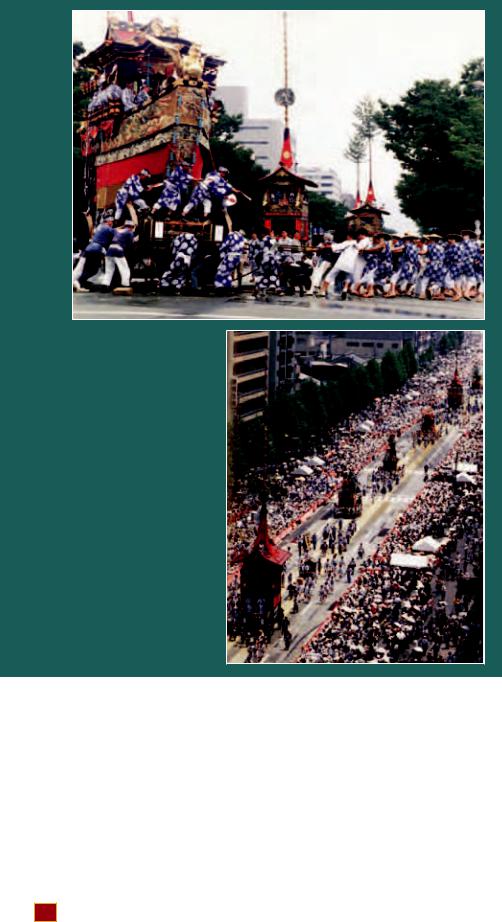
FIguRe 8 gion Festival: Floats turning a street corner
From a publication of the national association for the protection of Japanese traditional float festivals (Zenkoku yama·hoko·yatai hozon Rengo-kai)
FIguRe 9 gion Festival: aerial view of the floats’ procession
Kyoto newspaper Company
twenty years. this site is frequently, and mistakenly, presented as an example of the origin of Japanese architectural conservation practice.
this periodic renewal of buildings provides the conservation experts with a very interesting topic of debate on value assessment and authenticity. this site is a unique historical example of a method of building maintenance in which one hundred percent of the original design is preserved, while zero percent of the original material is retained.
Wooden buildings located in a country such as Japan, which has a subtropical climate with high tem-
peratures and high humidity in the summer season, need regular maintenance. this implies the need for replacement of material when wood-rot sets in. Some researchers try to make the point that this kind of regular maintenance custom for wooden buildings is among the reasons leading to the primitive origins of this ritual. However, there is no current relationship between this ritual of the particular religion Shinto and the construction and maintenance methods developed for other Japanese wooden buildings in general. this includes the buildings of other religions such as Buddhism, to say nothing of the contemporary architectural conservation standards and practice in Japan for buildings and structures protected under the categories for tangible heritage.
‘shikinen zoTai’, a periodic rebuilding riTe of japan’s indigenous religion, shinTo
Shinto is an indigenous religion of Japan, which was derived from nature worship, rooted in beliefs related to the wetland rice agriculture of prehistoric times.
Shikinen zotai is a rite of Shinto that calls for periodically rebuilding or renewing the shrine buildings of its entire precinct. In the case of the Ise Shrine, this is every twenty years. Until the middle of the nineteenth century, a certain number of Shinto shrines had been carrying on this rite, but at present only one Shinto shrine, namely the Ise Shrine, continues this practice in the pure form. Of course, it should be noted that there are some examples of Shinto shrines which continue periodic rebuilding, or renewal rituals of Shinto symbols or some secondary shrine buildings, such as
On-bashira Matsuri of Suwa Shrine where a festival involves replacing sacred posts in the shrine compounds every six years.
However, there are no other examples that continue the rebuilding ritual of the entire shrine compound in its pure form as a core ritual of the established Shinto religion.
Included for renewal are not only the shrine buildings but also the objects to be enshrined, as well as offerings and instruments used for the ceremonies that take place during the rite. In the case of the Ise Shrine, it takes almost nine years from the initial ceremony (the observance of the cutting down of the trees for building material) to the climax year in which there are a series of ceremonies for the
52 conservaTion of living religious heriTage
building construction. It culminates in the most important ceremony (sengyo), which is the transfer of the symbol of the gods (kami) from the old building to the new building, followed by other sacred ceremonies.
The oldest record of this rite at the Ise Shrine dates back to the seventh century. Since then, for more than 1300 years, it has been carried out every twenty years, although scheduling irregularities or temporary periods of discontinuation have occurred for various reasons at certain times throughout the shrine’s history. The Ise Shrine possesses and maintains its own mountains as well as agricultural fields for material supply, and employs craftsmen’s teams in the various fields necessary for this ritual, from building construction to ritual object production. The latest rebuilding was the sixty-first, for which the building reconstruction completion and the sengyo ceremony took place in 1993.
There is no definitive explanation for the origin of this rite. On the one hand, some architectural historians suggest that the ritual originated as a maintenance system for the shrine buildings, one that probably needed to take place regularly and on a major scale since the ancient structures were constructed of organic materials (a primitive wooden structures with embedded wooden pillars and thatched roofs). On the other hand, other scholars seek anthropological meanings. Shinto rites were developed from annual agricultural rites, those of rice paddy agriculture. Purification rites play an important role in Shinto, and therefore periodic renewal is a consistent part of Japanese culture.
Religious ritual as heritage
There are two points for further discussion regarding the Ise Shrine, both concerned with the fact that the site is not protected under Japanese law by any category of cultural heritage.
The first point is directly connected to the religion itself, namely Shinto, the former state religion of Japan. Shinto was re-established as ‘State Shinto’ or the state religion by then imperial government with a policy of realizing the unity of religion and politics after the Meiji restoration in 1868. This policy was continued until the end of the Second World War.
The current policy enforcing the separation of religion and politics in the Constitution is based on the experiences of that period. Among Shinto shrines, the Ise Shrine was located at the top of the Shinto shrine hierarchy, and was protected and strongly supported by the then government as the first ‘State Shinto’ shrine. The shrine still has a strong connection with the rituals executed by the imperial family. While it is understood that the political-
historical situation of the Ise Shrine is not among the primary reasons why it has not been designated by the government under the current heritage law, the separation of religion and state, as well as the appropriateness of the argument regarding whether the government can support such Shinto shrines, require further discussion.
The Ise Shrine is just one example, but is the most important symbolic example of its type in Japan. There exists a very delicate relationship between religion, particularly that of Shinto, and heritage in Japan. Without proper understanding of this situation, the heritage protection system in Japan cannot itself be fully understood. This is why in discussions of living religious heritage the status of religion in each culture must be made clear.
The second point of discussion is the categorization of cultural property designated by law for those sites where buildings and objects are renewed every twenty years. This is a more interesting theoretical exercise for conservation experts compared to other issues.
The periodic rebuilding ritual of the Shinto religion – shikinen zotai – has no relation to the current practice of modern Japanese architectural conservation, although many foreign experts have used it as a unique example of conservation practice cultivated in Eastern countries. Japan started its formal protection of cultural heritage by issuing the ‘Proclamation by the Imperial Cabinet for the Protection of Antiquities’ in 1871. During the establishment of the ‘Law for the Preservation of Ancient Shrines and Temples’ in 1897, when the designation system was introduced for both immovable and movable tangible heritage, full-scale architectural conservation practice began. For this type of heritage, assessment is made on the basis of issues of value and authenticity.
The standards of Japanese architectural conservation developed along with this very important concept. A remarkable debate on material authenticity, similar to the one between those favouring Viollet Le Duc and those favouring Ruskin (Ruskin and Viollet Le Duc did not debate directly), took place in Japan at the end of the 19th century, just after modern architectural conservation started.
The type of heritage protected by the Law of 1897 has been retained in current legislation as Yukei Bunkazai, or tangible cultural properties, expanding the typology of heritage from only those properties owned by religious bodies to other types. At present, roughly 2000 architectural heritage sites are designated as Yukei bunkazai by the central government. All buildings protected under this category have tangible or material values, and conservation or repair of these buildings has been
4 • The Ise Shrine and the Gion Festival |
53 |
|
|
